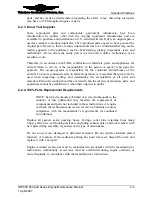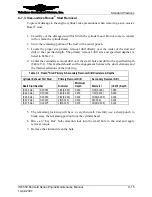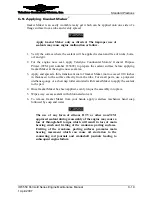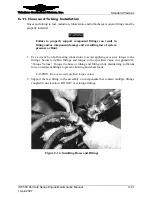
Standard Practices
Teledyne Continental Motors, Inc.
TM
C-18
IOF-550 Permold Series Engine Maintenance Manual
1 April 2007
C-8.
Cotter Pin Installation
Cotter pins are not reusable. Replace used cotter pins with the specified new cotter pins
made of corrosion-resistant steel.
Procedure
1.
Install the nut on the bolt.
2.
Torque the nut where the cotter pin is to be inserted to the lower torque limit specified
in Appendix B.
3.
If the slots in the nut do not line up with one of the holes in the bolt, continue
torquing in small increments until the holes align; do not exceed the upper limit of the
torque specification. Change the nut if necessary.
4.
Insert the cotter pin through a hole with the head seated firmly in the slot of the nut.
5.
Spread the exposed ends of the cotter pin. Bend the ends over the flat on the nut and
the end of the bolt.
CAUTION: Do not use side-cutting type pliers to bend back the
cotter pin ends. These pliers may cause nicks which can weaken the
cotter pin to the extent that it can become detached.
6.
Seat the ends firmly against the bolt and nut (Figure C-11).
7.
Trim the protruding ends as necessary.
8.
All cotter pins must fit snugly in holes drilled in specific hardware. On castellated
nuts, unless otherwise specified, the cotter pin head must fit into a recess of the nut
with the other end bent such that one leg is back over the stud and the other is down
flat against the nut as shown in Figure C-11.
Figure C-11.
Cotter Pin Installation





































